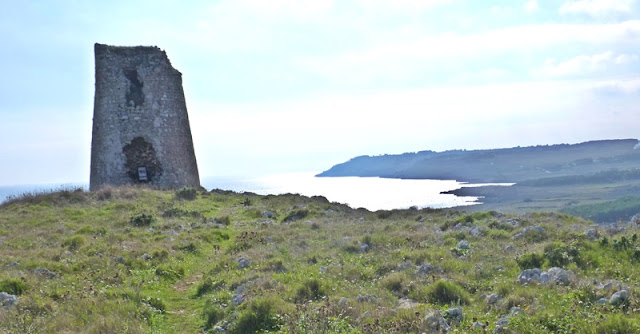Wednesday-Thursday, October 28-29, 2015
We left Lecce after
breakfast for a trip west to the Gulf of Taranto, the body of water between the
heel and the sole of the boot of Italy, which is part of the Ionian Sea.
Our first stop was in the
town of Galatina where we visited the Church of Santa Caterina built in the 13
c. and famous for its frescos “in the style of Giotto.”
Well, Giotto they definitely
are not. Seeing them gave us renewed
appreciation for Giotto:
We traveled on to Gallipoli,
Italy (not a town of the same name in Turkey, where the famous battle took place in 1915). This is a beautiful port town:
There’s a beach and there
were a few intrepid people on the beach and in the water:
There’s a wonderful fish
market and there are loads of mussels:
This was a famous olive
oil exporting port for hundreds of years, and we visited an old “frantoio”, one
of the presses used to produce the oil.
A horse or donkey was used to pull the stone round and round:
We stopped for a photo of
the six of us on a narrow street overlooking the sea:
Lunch was at yet another
lovely masseria, this one named St. Andrea:
There are small cottages
on the premises, and fanciful signs which didn’t make much sense. This one is on the front door to one of the
guest rooms:
We had a wonderful lunch
in a beautiful room with a fire to take off the chill:
After lunch Sheila and
Peter left us to begin their travels home, as they have a flight tomorrow from
Milan and need to get there this evening.
The four of us remaining took a long walk passing olive harvests:
We wound up at La Cutura,
an amazing botanical garden (http://www.lacutura.it/giardino_botanico.php
). Here’s part of the cactus and
succulent house:
The garden is enormous,
and we walked some of it, but it was getting dark, and we were exhausted. We drove back to Lecce for our final (and
wonderful) dinner in Apulia.
Thursday morning we said
goodbye to Ido and Enzo at the Brindisi airport and flew to Milan where we
stayed at a very ordinary airport hotel.
Friday we flew home—totally uneventfully, and began the decompression
from a truly wonderful trip.























































